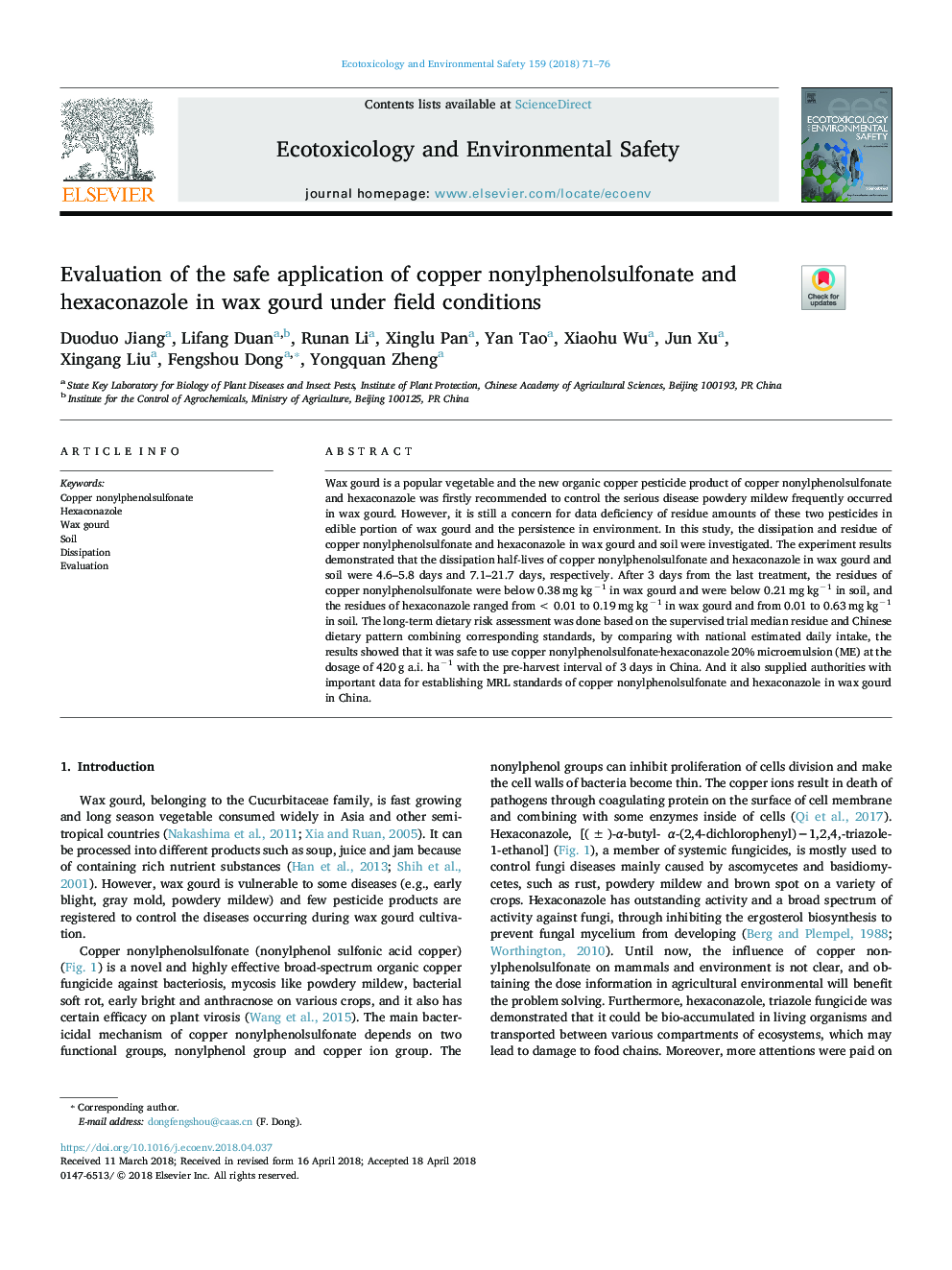| Article ID | Journal | Published Year | Pages | File Type |
|---|---|---|---|---|
| 8853636 | Ecotoxicology and Environmental Safety | 2018 | 6 Pages |
Abstract
Wax gourd is a popular vegetable and the new organic copper pesticide product of copper nonylphenolsulfonate and hexaconazole was firstly recommended to control the serious disease powdery mildew frequently occurred in wax gourd. However, it is still a concern for data deficiency of residue amounts of these two pesticides in edible portion of wax gourd and the persistence in environment. In this study, the dissipation and residue of copper nonylphenolsulfonate and hexaconazole in wax gourd and soil were investigated. The experiment results demonstrated that the dissipation half-lives of copper nonylphenolsulfonate and hexaconazole in wax gourd and soil were 4.6-5.8 days and 7.1-21.7 days, respectively. After 3 days from the last treatment, the residues of copper nonylphenolsulfonate were below 0.38â¯mgâ¯kgâ1 in wax gourd and were below 0.21â¯mgâ¯kgâ1 in soil, and the residues of hexaconazole ranged from <â¯0.01 to 0.19â¯mgâ¯kgâ1 in wax gourd and from 0.01 to 0.63â¯mgâ¯kgâ1 in soil. The long-term dietary risk assessment was done based on the supervised trial median residue and Chinese dietary pattern combining corresponding standards, by comparing with national estimated daily intake, the results showed that it was safe to use copper nonylphenolsulfonate·hexaconazole 20% microemulsion (ME) at the dosage of 420â¯g a.i. haâ1 with the pre-harvest interval of 3 days in China. And it also supplied authorities with important data for establishing MRL standards of copper nonylphenolsulfonate and hexaconazole in wax gourd in China.
Related Topics
Life Sciences
Environmental Science
Environmental Chemistry
Authors
Duoduo Jiang, Lifang Duan, Runan Li, Xinglu Pan, Yan Tao, Xiaohu Wu, Jun Xu, Xingang Liu, Fengshou Dong, Yongquan Zheng,
